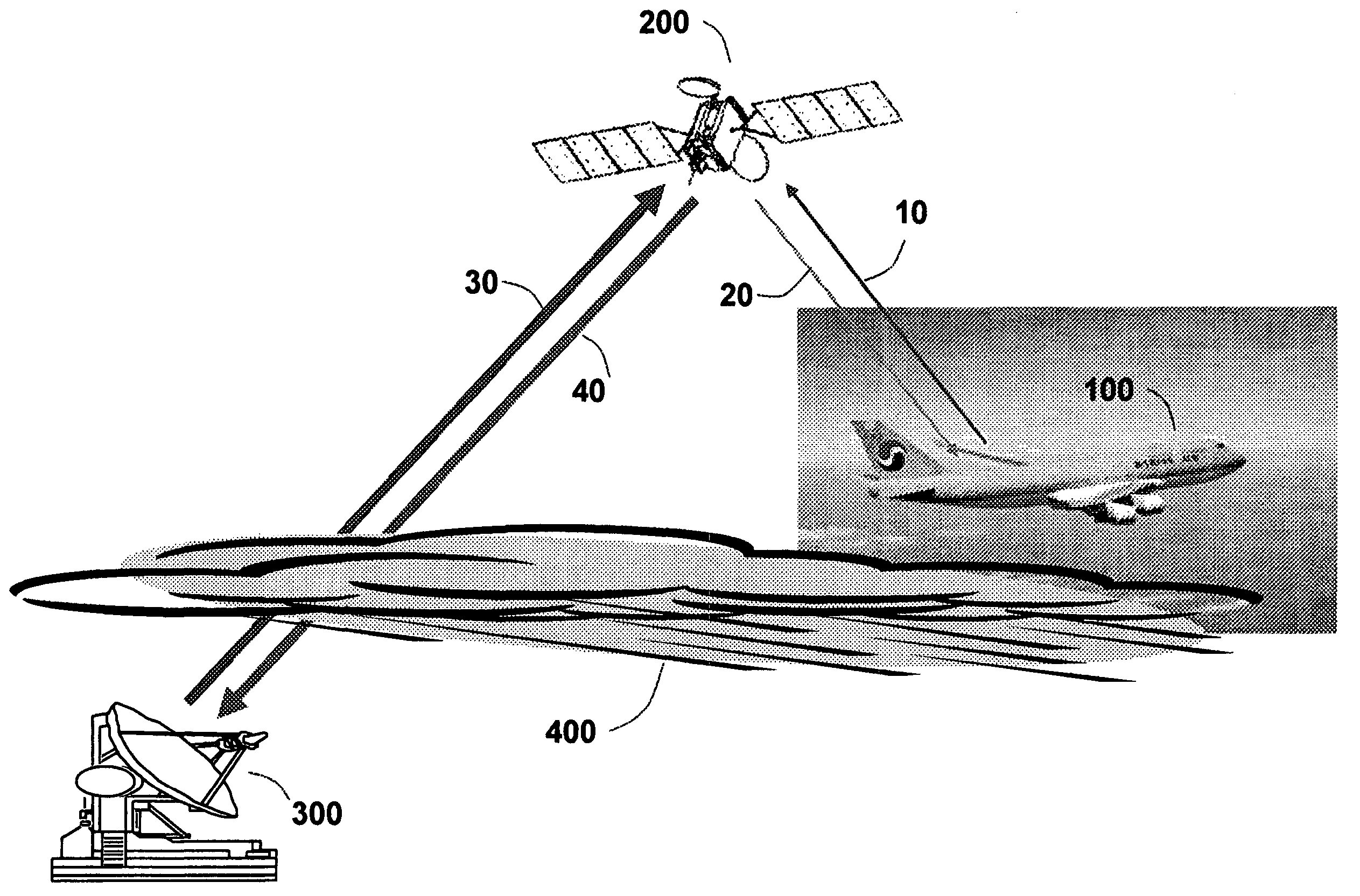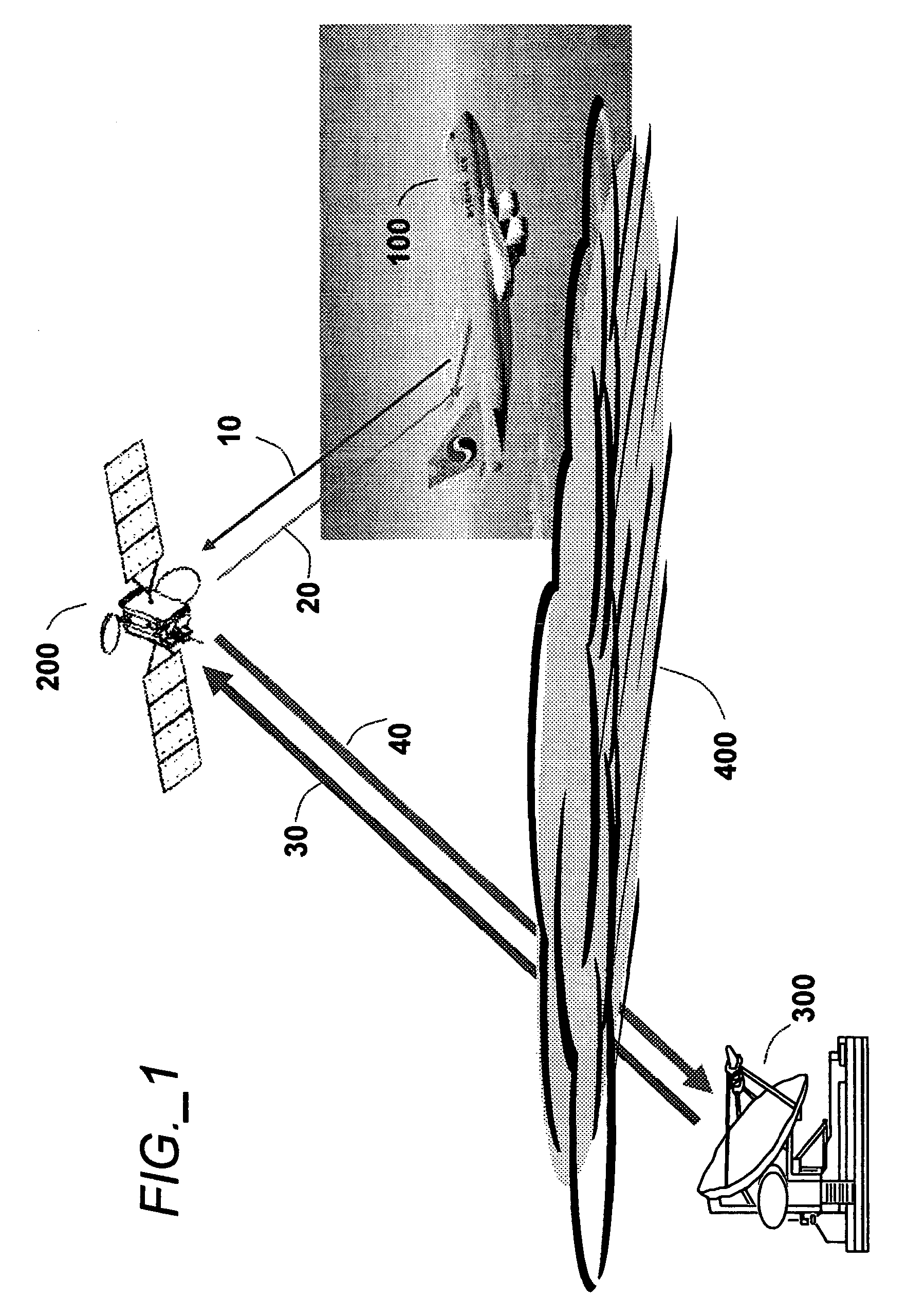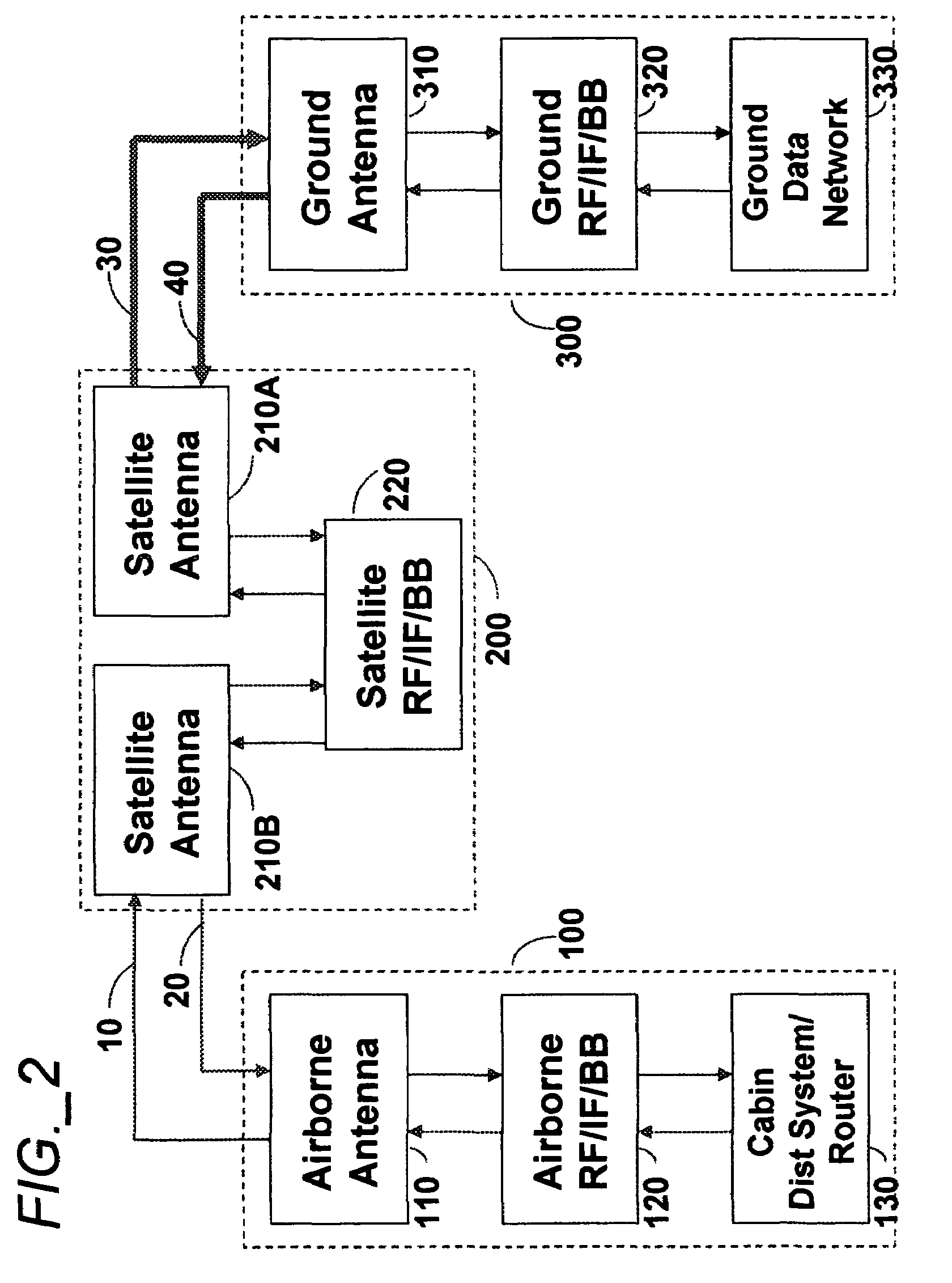Aeronautical broadcast and communication system
a communication system and aircraft technology, applied in the field of aircraft inflight entertainment and communication systems, can solve the problems of radio waves at these frequencies being susceptible to rain attenuation in large numbers, and achieve the effect of less use, more bandwidth, and large bandwidth
- Summary
- Abstract
- Description
- Claims
- Application Information
AI Technical Summary
Benefits of technology
Problems solved by technology
Method used
Image
Examples
Embodiment Construction
[0041]The present invention is illustrated in the accompanying figures in which like reference numerals indicate similar elements and in which:
[0042]FIG. 1 illustrates an embodiment of the present invention, comprising one or more airplane(s) in flight 100, one or more geostationary satellite(s) 200, and one or more ground station(s) 300.
[0043]The broadcast and communication uplink 10 and downlink 20 between the airplane 100 and the satellite 200 use radio frequency radio waves at 17 GHz or higher, such as Ka-band, or V-band, or optical frequencies, which are susceptible substantially to rain 400 attenuation at low altitudes, but not significantly at the threshold altitude, approximately 4,500 m or above, at which most long range commercial airplanes cruise. The broadcast and communication uplink 30 and downlink 40 between the satellite 200 and the ground station 300 may use any radio frequencies that are suitable for carrying broadband signals and also suitable for closing the link...
PUM
 Login to View More
Login to View More Abstract
Description
Claims
Application Information
 Login to View More
Login to View More - R&D
- Intellectual Property
- Life Sciences
- Materials
- Tech Scout
- Unparalleled Data Quality
- Higher Quality Content
- 60% Fewer Hallucinations
Browse by: Latest US Patents, China's latest patents, Technical Efficacy Thesaurus, Application Domain, Technology Topic, Popular Technical Reports.
© 2025 PatSnap. All rights reserved.Legal|Privacy policy|Modern Slavery Act Transparency Statement|Sitemap|About US| Contact US: help@patsnap.com



